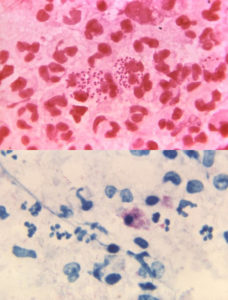
20 Years Have Passed Since Montgomery Last Considered Condom Distribution
Because of a spike in sexually transmitted diseases, Montgomery County health officials plan to distribute condoms in school wellness centers.
The last time the county contemplated condoms in schools was more than 20 years ago, according to a current and former school board member.
Distribution hasn’t been considered in her 20 years on the Montgomery County Board of Education, said Patricia O’Neill, the board’s District 3 member.
State Sen. Nancy King of Montgomery Village is a former school board member. She remembers a plan for condom machines in the bathrooms that took place in 1995 or 1996.
“The public came out,” she said. “They thought we were encouraging kids to be sexually active. … It sure got voted down.”
King continued: “I remember people saying that if students needed instruction on how to put one on, they weren’t old enough to be using one in the first place.”
The county’s Department of Health and Mental Hygiene revealed Monday that Montgomery County had the highest rates of sexually transmitted diseases seen in a decade.
Chlamydia, gonorrhea and syphilis cases have shown remarkable increases from 2016 to 2017 for individuals between the ages of 15 and 29, the county said.
The county plans a prevention, education and treatment strategy, which includes distributing condoms in school wellness centers, operated by the health department in four Montgomery high schools.
Dr. Travis Gayles, the county’s health officer, said his department was combing through the data to find where the STDs are concentrated. With that data, health officials can communicate more effectively with the community, he said.
Dr. Gayles said a number of factors were driving the increased numbers. One reason could be younger people and their sense of their own invincibility.
“When I was growing up in high school and college, that was a time when HIV medications were not as good. We still looked at HIV as a death sentence,” he said.
Unprotected sex doesn’t carry the same risk in their minds as decades before, Gayles said.
Another component could be the cut in funding for sexual health programs in health departments. The cuts have limited traditional disease intervention, he said.
Brittany Fowler, a spokeswoman for the Maryland Department of Health said the department’s Center for Sexually Transmitted Infection Prevention has provided added support to five counties, including Montgomery County.
Montgomery County is using the funding to enhance surveillance and follow up with all gonorrhea cases to identify more trends and confirm correct treatment to help decrease spread, Fowler wrote in an email.
Gayles said the funding has helped the county health department to address federal government budget cuts.


Engage us on Facebook
Follow us on Twitter
Tweets by @mymcmedia